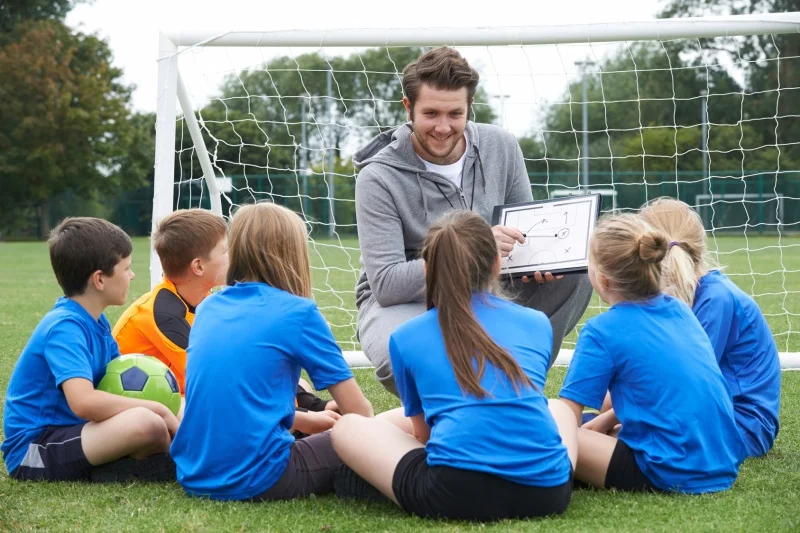Introduction
Making sure those in your charge are safe inside and outside your institution should always be your first responsibility if you work in education. You have a moral and legal obligation to respond to any indications that someone may be experiencing abuse at home or in their society.
Everyone in the organisation must design and follow rigorous safeguarding policies to guarantee everything is being done to protect individuals at risk. Today’s column explores the significance of safeguarding, particularly in education.

What is safeguarding?
Even though everyone involved in the education industry should know the word, you might not know what safeguarding entails. Simply expressed, safeguarding refers to the actions taken to protect the health, happiness, and human rights of those entrusted to your care. Safeguarding is typically used in environments with a duty of care for children, adolescents, or vulnerable adults, such as in the education, health, and social care sectors.
Why is safeguarding important?
Safeguarding is crucial for defending vulnerable people from injury, abuse, and neglect. Failure to uphold your safeguarding obligations may cause someone’s suffering to continue. Effective safeguarding is essential to identify the warning signs of abuse and notify the appropriate authorities in time to assist victims.
Safeguarding is essential in schools because the teaching staff has unique access to information about how kids grow, act, and interact with others. So, they are more likely to detect physical or psychological abuse. They can also use their special position to inform kids about the risks they face inside and outside the classroom and how to receive help.
What is safeguarding policy?
A company’s safeguarding strategy outlines how it intends to safeguard individuals’ welfare in its care. It should outline the organisation’s plans for safeguarding children, adolescents, and vulnerable adults against danger and abuse inside and outside its facilities.
Education organisations must have a written safeguarding policy statement as part of their duties. The organisation’s safeguarding policy should be outlined in this statement and its commitment to safeguarding and strategies for keeping persons under its care safe.
You might want to refer to the official Ofsted safeguarding policy and inspectors’ instructions as a resource. These materials set forth the criteria for evaluating safeguarding in early childhood education and skill-building settings across the nation.
Safeguarding is essential in schools because the teaching staff has unique access to information about how kids grow, act, and interact with others. So, they are more likely to detect physical or psychological abuse. They can also use their special position to inform kids about the risks they face inside and outside the classroom and how to receive help.
What are the six principles of safeguarding?
Six safeguarding principles are outlined in The Care Act 2014, the primary safeguarding law that applies to NHS bodies. Although this statute solely pertains to NHS institutions, these concepts are applicable everywhere, especially in the field of education.
- Personalisation
The assumption of person-led decisions and informed consent are all aspects of empowerment. - Prevention
It is preferable to act now before harm is done. - Proportionality
Is the ability to respond in a way that is both reasonable and least invasive, given the risk at hand. - Protection
aid and advocacy for those who are most in need. - Partnership
Services that work with their communities to find local solutions. Communities can help prevent, identify, and report neglect and abuse. - Accountability
Accountability and openness in providing safety measures
What is safeguarding children?
Any educational organisation in charge of children must have a defined safeguarding procedure. A key component of the overall safeguarding process is child protection, which aims to protect children in your care from danger, abuse, or exploitation.
These four categories describe child safety:
- Defending kids from maltreatment and cruelty.
- Avoiding harm to children’s growth or health.
- Ensuring that children receive safe and efficient care as they grow.
- Taking measures to ensure the best outcomes for all children and young people.
Who is responsible for safeguarding children?
Everyone who interacts with children has a duty to keep them safe. To do this, they must be aware of the warning signs of abuse and follow the procedures for reporting their concerns. Working Together to Safeguard Children, government guidance outlines how everyone must be responsible, communicative, and alert to safeguard children from harm.
Local governments and social care teams are responsible for conducting investigations once concerns have been raised. The criteria for a wide range of authorities, organisations, and people who have a duty of care for children are outlined in Sections 10 and 11 of the Children Act of 2004.
What is contextual safeguarding?
Understanding and responding to children’s or young people’s experiences of damage outside their families is a key component of the contextual safeguarding method. It acknowledges young people’s connections with their neighbourhoods, educational institutions, and online networks that can result in abuse, injury, or exploitation.
Individuals with safeguarding obligations, such as those working in the education sector, must recognise the need to act when appropriate because many parents have little to no influence on these connections outside the family home.
What is the safeguarding of vulnerable adults?
At times, it may be vital to protect adults and children. These people are referred to as “vulnerable adults.”
A vulnerable adult is a person who is over 18 and who is either unable to care for oneself or who, due to their circumstances, is very susceptible to exploitation or damage. Some elements that may contribute to the classification of people as vulnerable include:
- physical or mental impairments
- Advantage of poverty
- experiencing trauma
- Racial, religious, or political exclusion
- rejection from their families or communities
But everything is covered in this list. No, employees must be aware of any person in their care who may be vulnerable to exploitation or abuse. They must make sure that any warning indications put forward by these people are seen and taken seriously.
Safeguard training
This blog cannot cover every aspect of safeguarding because it is a vast subject. You must receive formal training to gain a solid understanding of safeguarding practice. When it comes to training, ESS offers a few different choices for individuals who are interested in learning more about protecting adults.
The three-month Level 2 course, NCFE CACHE Understanding Safeguarding and Prevent, focuses on the fundamentals of Prevent Duty and safeguarding, particularly internet safety. This course offers the theoretical understanding required for protecting adults. This might involve employment in hospitals, adult education programmes, community centres, and jails.
We heartily suggest the free online courses offered by the Education & Training Foundation for individuals seeking yearly updates to maintain their safeguarding knowledge and credentials. Depending on your job situation, we recommend their Safeguarding in FE and Training and Safeguarding & Safer Recruitment in FE courses.



